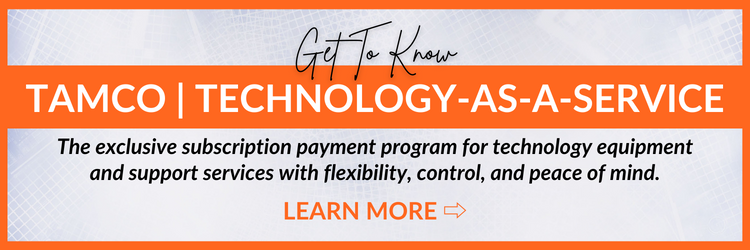Businesses and organizations should never use capital expense (CAPEX) funds to pay for their audio visual solution equipment like displays, cameras, speakers, mics, control panels, and related components, even if they have the cash to do so. Period. It may seem like a bold statement since customers have been exchanging cash for AV systems since the infancy of the industry. The truth is, when you unpack the layers of what is being paid for within an AV solution it’s easy to see why using cash is not a financially smart way to utilize an organization’s capital dollars.
Let’s take a look at three key reasons that explains why we believe this to be true and will prove that it is, financially, the most common sense approach for a business to buy audio visual solutions.
01. Non-Revenue Generating Asset
Even though AV technology solutions are now considered essential use and in some instances mission critical, they are still non-revenue generating assets.
What is a non-revenue generating asset? It’s an asset that may provide efficiency and protection, but it won’t produce revenue or profit.
Traditionally, Return on Investment (ROI) is used to determine the value of a capital expenditure. However, an investment in the simplest terms is an action of investing money for profit. Therefore, how can a non-revenue generating asset even be considered an investment to begin with? This is why the ROI for an audio visual solution is so bad that the ROI purists would likely attempt to ban it from ever being computed.
02. Non-Recoverable Costs (NRC)
AV systems are rich with non-recoverable costs (NRC).
What is a non- recoverable cost? I’ll point you to any audio visual solution’s bill of materials (BOM). On a BOM that represent the total sell price, there are NRC you can see and there are some you cannot see.
-
- Examples of those NRC you can see; design, installation labor, software, licensing, programing, and training.
- Examples of NRC you can’t see; manufacturer margin, distributer margin and integrator margin.
All of these are considered non- recoverable costs simply because they vaporize the asset the day after installation. Sometimes this can be as much as 50 percent of the sell price at the time of sale. This flows into our third reason why customers should never use CAPEX to pay for AV technology.
03. Rapid Technology Obsolescence
It’s uncommon to track the amount of research & development (R&D) manufactures in the technology industry, including AV manufacturers, are spending, but that is what we did. We found:
Using a sample of publicly traded companies, in the different technology sectors, on average, manufacturers spent 17.5 percent of their revenue on R&D in 2020. And that’s during a pandemic year!
In the past five years the advancement of audio visual technologies has sky rocketed and its common knowledge that what is bought and sold today, will be obsolete in two to four years. Therefore, rapid obsolescence is the third and final reason why these solutions plummet in value so rapidly and why organizations should never use CAPEX dollars to pay for it.
These three reasons defy all the principles of using cash or a capital expenditure for today’s AV technology solutions, even if you have the budget for it.
Look at the financial principles of world renowned investor and business tycoon Warren Buffet and what he stands for. We are quite convinced, based on the knowledge provided here, despite the amount of money he has, he would keep his working capital and look to procure these solutions with an alternative usage/service model.
That alternative is also known as the subscription consumption model, where integrators embrace the monthly service offering and provide customers a more meaningful way to absorb these solutions.
Want to learn more about an as-a-service alternative that addresses the aforementioned reasons for opposing CAPEX? Discover more here.


